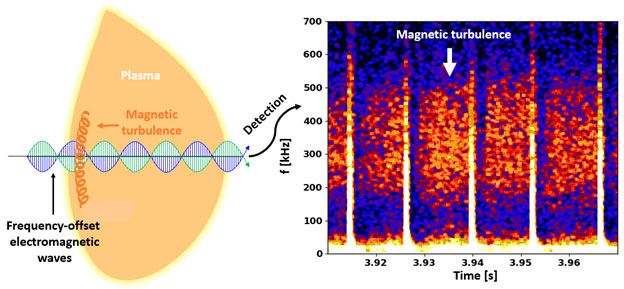
Resistance in Walls Can Cause Disruptive Energy Loss
Plasma simulations, theory, and comparison with experiment show that resistive wall tearing mode can cause energy loss in tokamaks.

Plasma simulations, theory, and comparison with experiment show that resistive wall tearing mode can cause energy loss in tokamaks.

Roughening of fusion reactor wall surfaces over time may significantly reduce erosion rate predictions

Scientists used tokamak plasmas to study how heat shield materials protect spacecraft in the extreme conditions of atmospheric entry.

New discovery allows scientists to better stabilize the plasma in future compact fusion reactors.

Ultrafast electrons shed light on the web of hydrogen bonds that gives water its strange properties, vital for many chemical and biological processes.

Leveraging peeling physics in current tokamaks improves fusion performance and integrates with exhaust solutions for future fusion reactors.

The novel Lyman-alpha Measurement Apparatus (LLAMA) measures neutral particles in a fusion device and the fueling they provide.

Laboratory measurements give new insights into the physics of auroral electron acceleration by Alfvén waves.

An operating mode called wide pedestal quiescent H-mode allows tokamak operation without detrimental edge instabilities.

New approach helps protect tokamak walls while maintaining fusion conditions in the core.

First observation of embedded magnetic islands paves way for improved fusion reactor designs.

Electromagnetic waves are used to internally identify turbulent magnetic fluctuations in 100-million-degree fusion plasmas.